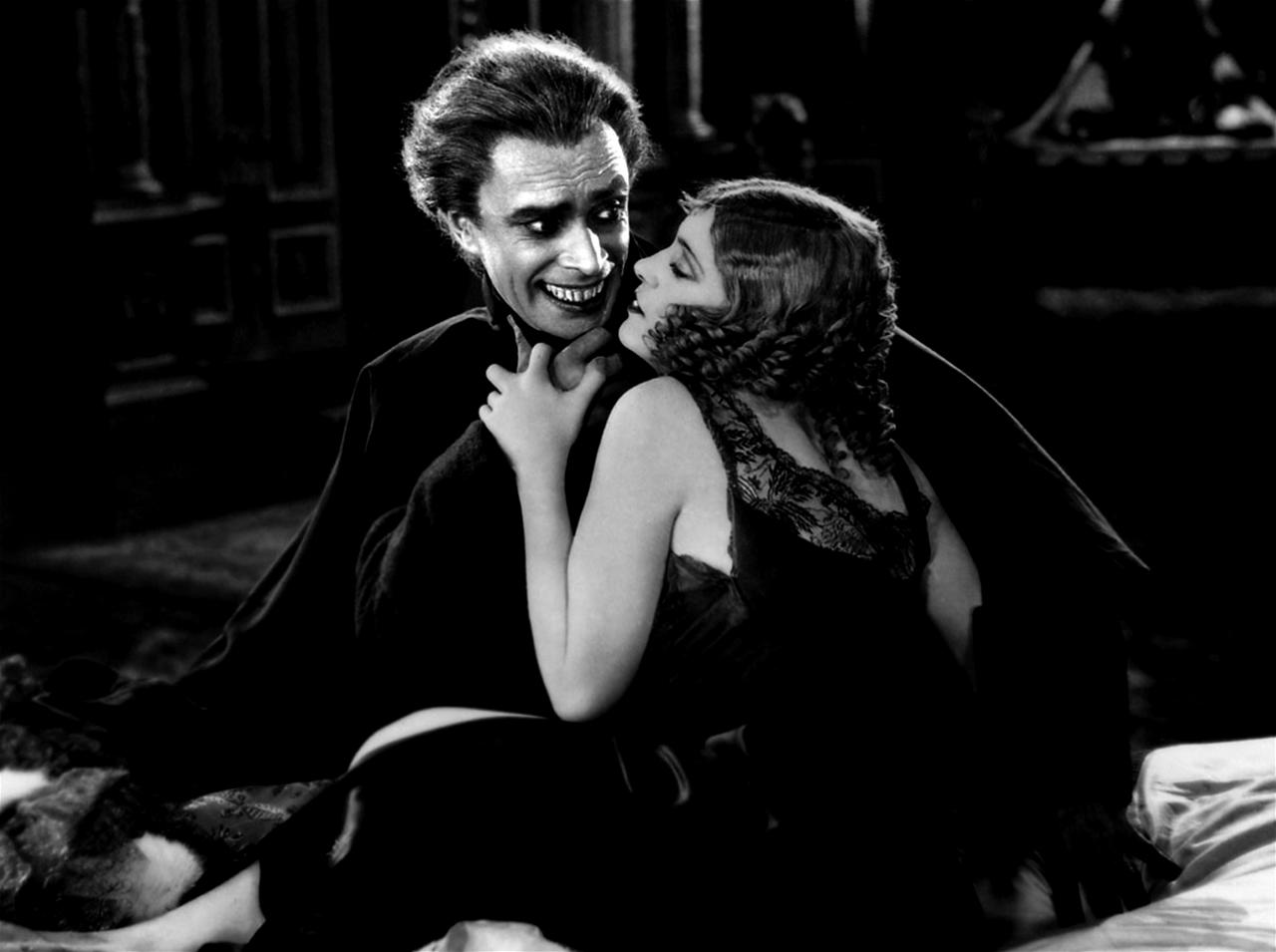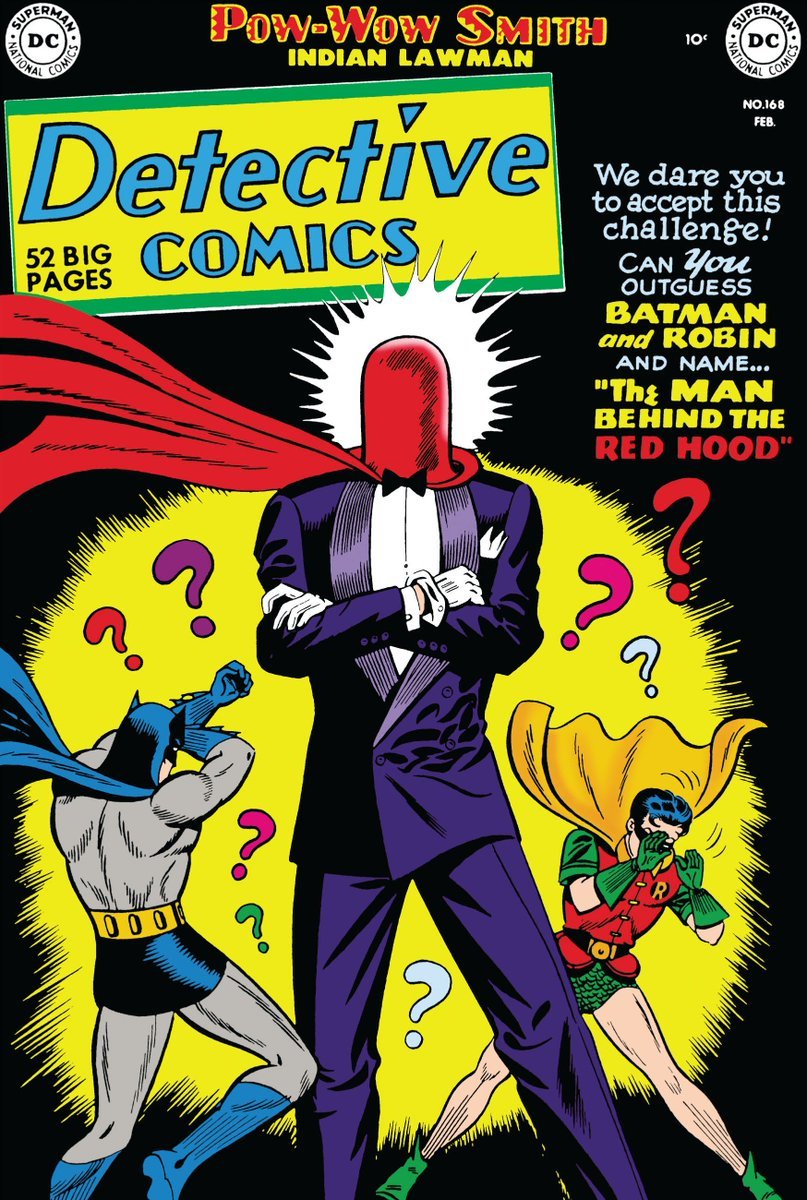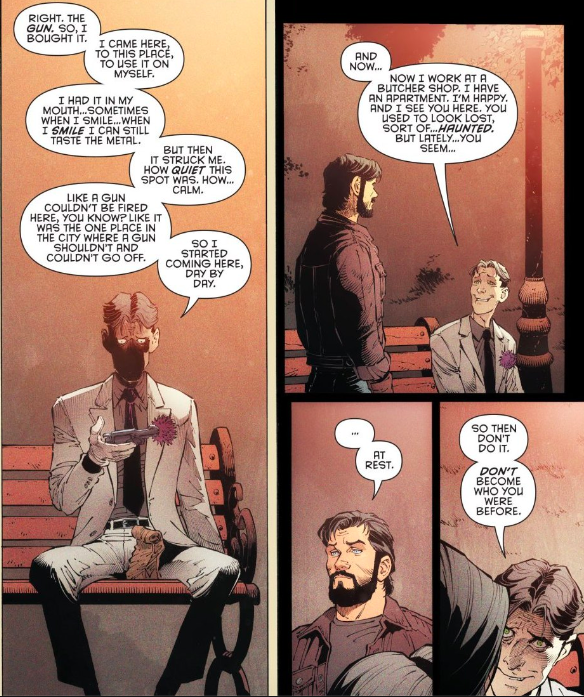The Joker is, unquestionably, one of the most popular characters in comics--and yet, there's a good chance that every Joker fan you talk to will have a completely different idea of just who and what the character is. Unlike his nemesis, Batman--whose origin story remains set in stone no matter the incarnation--Joker seems to shift at random, never actually settling into one idea or conceptualization for too long. Really, the only thing consistent about Joker over the years is his inconsistency.
But every comic book character has to come from somewhere, right? So what is the Joker's deal? Where did he actually come from?
The answer, unsurprisingly, is just as complicated and ambiguous as the character himself.
The Golden Age
While not Batman's first supervillain, Joker was one of the three antagonists featured in Batman #1 by Batman creators Bill Finger and Bob Kane back in 1940--the other two being Hugo Strange (who had previously appeared in Detective Comics) and Catwoman (here known only as The Cat). At this point, superhero comics hadn't even begun to settle into the genre we know and love today--Batman still regularly used guns, staple characters like Alfred Pennyworth had not yet been introduced, and Gotham City had yet to really be developed at all--but somehow, this initial outing for Joker managed to be, well, exactly what you'd expect from him even by modern standards. It included several heists, a couple of murders, his catch-all murderous chemical "Joker Venom," and a disgruntled mobster furious that Joker was pulling off crimes in his city without his say so.
Later in the same issue, Joker had his second story, "The Joker Returns," which features more of the same--daring prison escapes, booby-trapped chattering teeth toys, you name it. The art and the style of the writing would give these stories away as Golden Age relics, but the ideas behind them are the same things you could easily find in a Batman comic today. His purpose in the story, much like every early comic book antagonist, wasn't to add depth to the story as much as it was to create an excuse for action to happen. Batman needed a reason to swing into action, and the idea of the costumed supervillain was just beginning to come into vogue, so what better way than to make him fight a murdering thief dressed as a clown? The concept of the terrifying rictus grin was already very much in the pop culture zeitgeist--the idea of Joker was largely inspired by the 1928 silent film, The Man Who Laughs where the protagonist is a man whose mouth is forced into a horrifying smile.

Of course, these early stories actually included an explanation for who the Joker was or what motivated him--but this wasn't really anomalous at the time. The Golden Age wasn't big on fleshed out origin stories--Finger and Kane spoke candidly about their bare-bones conceptualization, emphasizing that they wanted a villain for Batman who would be "visually interesting" and not much else. It would actually take another decade or so for that particular piece of the puzzle to slot into place, all while Joker had spent 11 years cropping up in Batman stories again and again with no history to speak of.
The Silver Age
As superhero comics solidified their conventions--and as the social and political climates of America began to force sanctions on their content in the form of the Comics Code Authority, a self-governing ratings organization similar to the MPAA--things began to get a little odd. A lot of the "terror" and violence typical in Golden Age stories had to be phased out for the sake of the CCA's seal of approval, and readers who had stuck with their favorite characters for the last 10-plus years began craving more and more detail in the stories they read. Things like shared universe connections between different characters and books were beginning to form, and DC's slow experimentation with superhero teams like the Justice Society and Justice League had only just begun.
But a new comics culture demanded fresh methods of storytelling and new spins on familiar characters, and Joker was no different. In the early 1950s, he was finally given his first proper origin story in Detective Comics #168 by Bill Finger and Win Mortimer. The issue was a retroactive look at a classic Batman story featuring a villain named the Red Hood. It was revealed that Joker had been a disgruntled blue-collar worker who began moonlighting as a supervillain--The Red Hood--in an attempt to garner fame and fortune for himself. However, during one of his robberies (at the Monarch Playing Card Company--later known as Ace Chemicals), Batman caught him and, inadvertently, threw him into a vat of toxic chemicals. Red Hood survived the experience but was driven insane and physically mutated to look like a playing card Joker.

Get it? Because it was a playing card factory?
This was a pretty typical Silver Age story--unexplained chemicals causing physical and mental abnormalities, weirdly inexplicable coincidences playing into themes, the works. It didn't really matter that it only sort of made sense--this was the origin that stuck with Joker the longest, and wound up adapted and tweaked again and again over the years. After all, there was something poetic about the idea of Batman himself creating his own greatest enemy, and people had had a decade to get to know and become invested in their feud, so the twist resonated with fans.
Not that Batman had many fans in the '50s--his popularity had dwindled dramatically and would continue to do so until the advent of the live-action, Adam West-helmed Batman TV show in the mid '60s, which included yet another incarnation of Joker played by Caesar Romaro, complete with all of the camp and absurdity and none of the Shakespearean drama.
The silly, mustache-twirling, pie-throwing Joker of Batman '66 quickly overtook the tragic figure implied by his comic book persona's history and people stopped caring about whether or not Batman had created his nemesis or not. Everyone was having too much fun with the candy-coated pop-art explosion to care.
The Bronze and Modern Ages
Recovering from campy, goofy '60s shlock took some doing--and a whole new tone for Batman stories, spearheaded by Frank Miller's The Dark Knight Returns and by Tim Burton's live-action films. The goofiness was still there, for the most part, but the darkness was creeping back in around the edges, and a new, more serious tone began crystallizing in Gotham City. The Joker's heel turn away from his Batman '66 camp wasn't abrupt or immediate, but it was undeniable--especially when he went on to full-on murder one of Batman's teenage sidekicks, a moment that would go on to inform Batman comics for decades to come.
Shortly after the murder of Robin (Jason Todd) in A Death In The Family by Jim Starlin and Jim Aparo, Jack Nicholson was tapped to play the Joker for the 1989 Batman, which adapted a variation of his 1950s origin story with one important twist: In this version of events, it was revealed that Joker had been the murderer responsible for the deaths of Thomas and Martha Wayne, creating a sort of cyclical origin between both he and Batman--each with a past that caused the other's future.
The idea that Joker had, in fact, been the one to murder the Waynes didn't necessarily make the jump to the comics--but it did spark an interesting trend. Creators began using Joker as a tool to ask "what if?" hypothetical questions in the Batman universe--what if he had killed the Waynes? What if he was lying about being the Red Hood? What if everything Batman understood about him was a lie?

In that spirit, new spins on Joker "origin" stories began to crop up--some twisting the idea of the Red Hood around into new inventions, others turning the whole idea up to 11 and positing that Joker is some sort of immortal, eldrich being linked to Batman through ancient magic, time travel, and alternate dimensions. Live action efforts like The Dark Knight and Gotham threw their hand in the action, allowing actors like Heath Ledger and Cameron Monaghan to explore multiple possibilities that actively contradict one another. In fact, in current DC continuity, there are actually three different Joker entities existing simultaneously--all the same person, technically, but all completely different, too.
And that's the beauty of it, really. The last eight decades have shaped Joker into a character who is uniquely suited for these purposes--no version of his story is incorrect, so no version is correct, either. Even the addition of his own solo movie later this year--an origin story, this time without Batman in the mix--will do little to change that. Joaquin Phoenix will play a version of the character the same way actors like Nicholson, Romero, and Ledger did before him. He'll posit some answers to some of the questions everyone seems to have about who Joker is and why he does what he does. But whether or not those answers stick--or whether they are really even true at all--will all be a matter of perspective.
